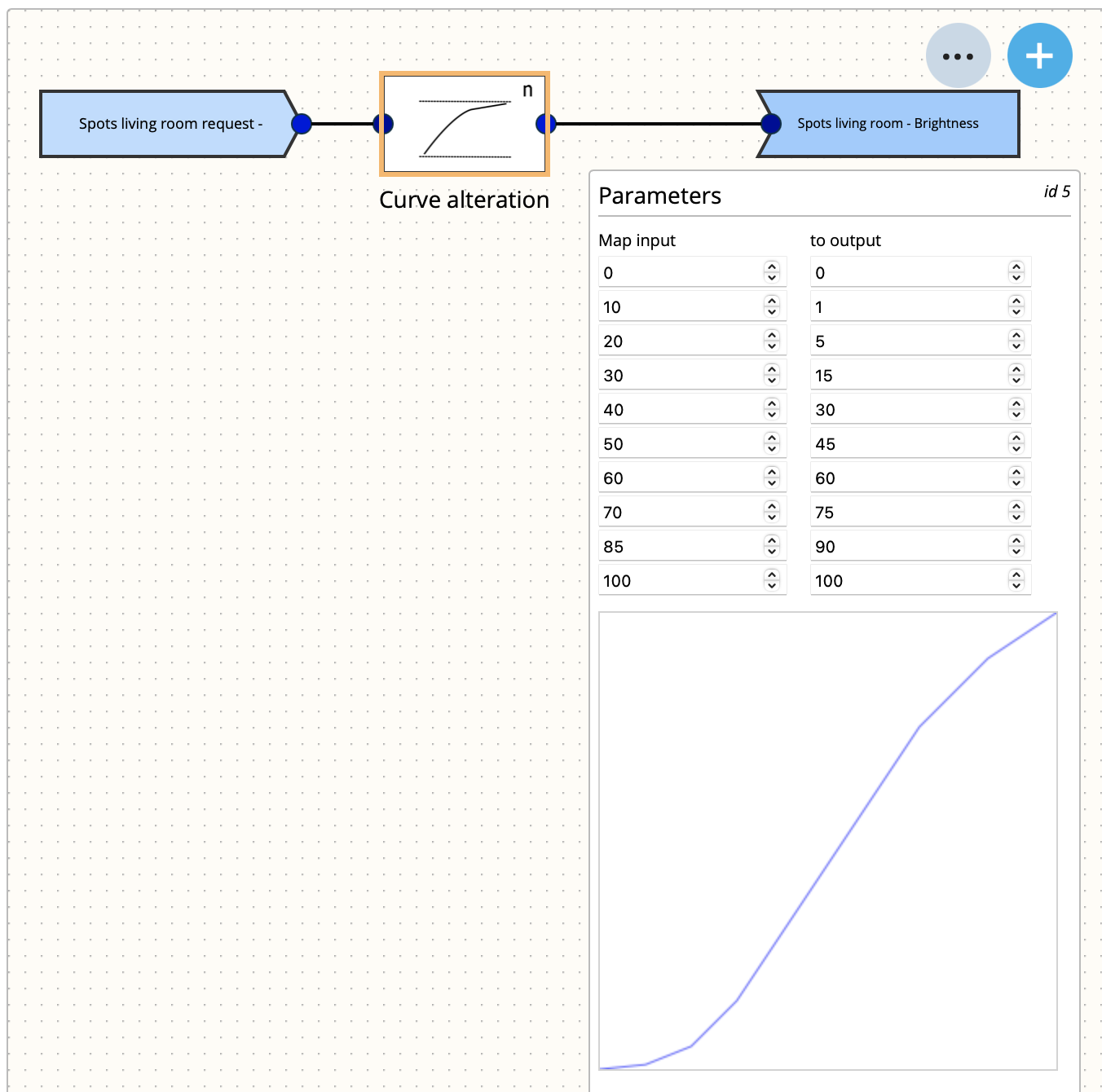Example curve alteration

Maarten Hemker
Administrator
in Logica
In this example, you can see how to use a curve alteration. For instance, when you have LED dimmable lights, they tend to respond differently to the dimming scale from 0 - 100% then regular light bulbs or halogen lights. LED lights often increase very much in brightness the first 20% and then only slowly become brighter near the higher values.

To realize this, we have created a dimming component in the project, which we make available in the visualization and connect to the light switches. The real actuator for the LED dimmer is connected as the output. We then "translate" the requested dimming values to an altered scale, which is sent to the actuator. For instance, a dimming value of 10% results in a set dimming value of 1%, corresponding to a reasonable actual low light value, but a value of 70% results in a set dimming value of 75%. This can create a more natural feel for the user, where the actual brightness of the LED lights correspond better to the requested dimming value.

To realize this, we have created a dimming component in the project, which we make available in the visualization and connect to the light switches. The real actuator for the LED dimmer is connected as the output. We then "translate" the requested dimming values to an altered scale, which is sent to the actuator. For instance, a dimming value of 10% results in a set dimming value of 1%, corresponding to a reasonable actual low light value, but a value of 70% results in a set dimming value of 75%. This can create a more natural feel for the user, where the actual brightness of the LED lights correspond better to the requested dimming value.
Categorieën
- 377 Alle Categorieën
- 34 Release notes
- 10 Release notes - Pairot
- 24 Release notes - xxter
- 13 Pairot
- 48 Algemeen
- 6 Device
- App
- 1 Project
- 3 Voice assistants
- 19 xxter
- 129 Algemeen
- 48 Algemeen
- 35 Nieuwe functionaliteiten en nieuwe features
- 23 Apps
- 22 Apps algemeen
- 1 Apps Beta release
- 24 Profielen
- 7 Profiel algemeen
- 16 Pagina's en pagina elementen
- 1 Waarschuwingsservice
- 97 Project
- 7 Logica
- 2 Aanwezigheidsdetectie
- 13 Acties
- 3 BREEAM
- 14 Cameras
- 16 Componenten
- 1 Config Tool
- 6 Opdrachten
- 28 Native scripts
- 3 LUA scripts
- 3 Statistieken
- 51 Device
- 43 Device algemeen
- 3 Toegangsrechten en lokale gebruikers
- 4 Aanwezigheidssimulatie / Presence simulation